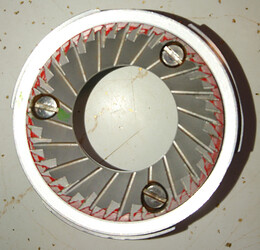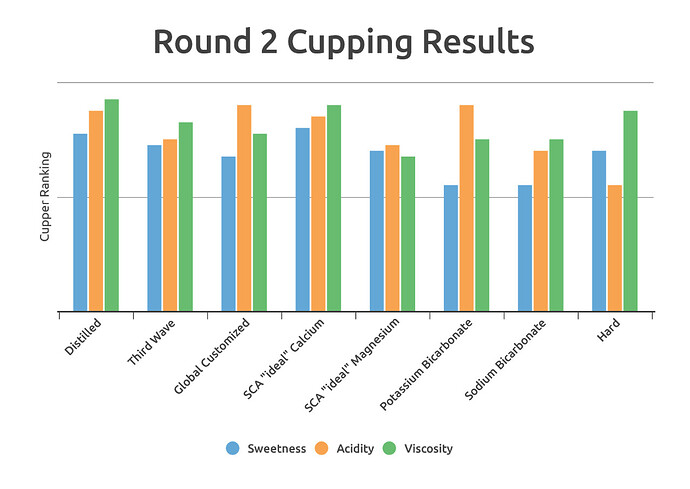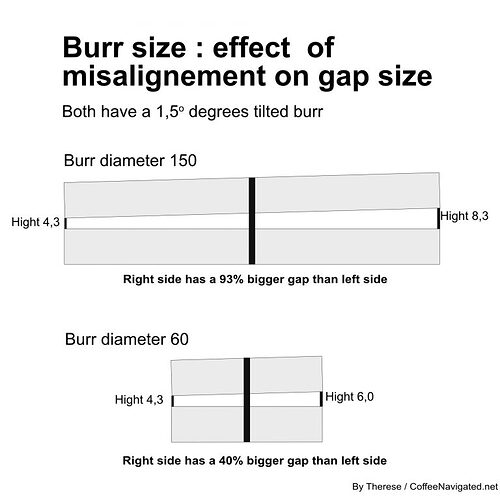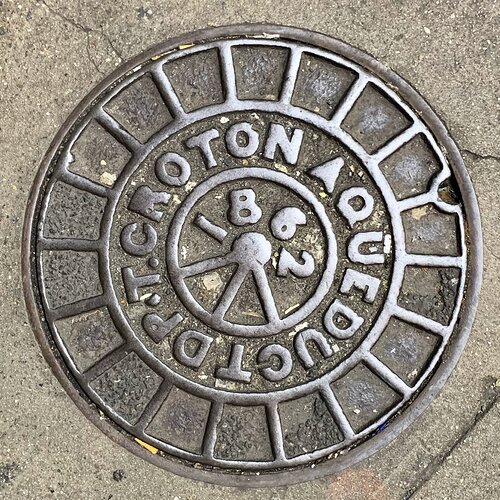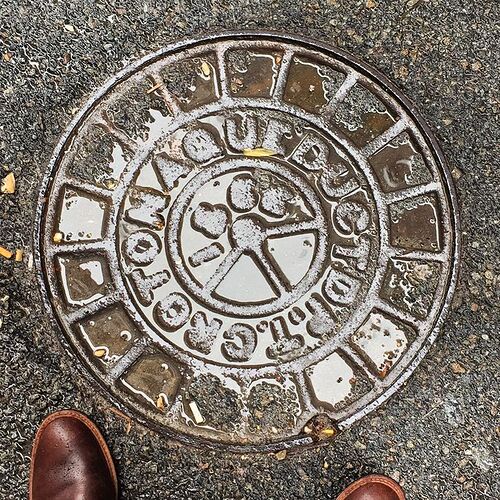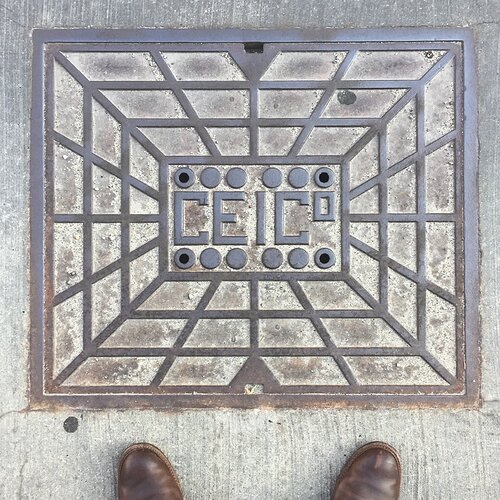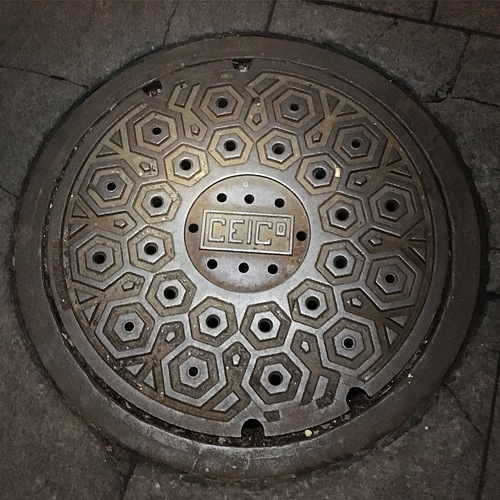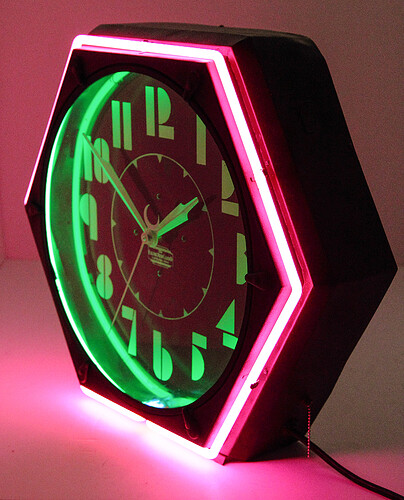Isn’t there a concern that the ink you are putting on the grinder will contaminate the coffee beans?
Nah it wipes off easily and then I cleaned it with isopropyl and wiped down with a fresh cloth before running 100g of old beans through it to season. Final pattern:
This is extremely close because the red at 3:00 to 4:00 is smeared, not untouched. I shimmed it with foil equidistant between screws in two different spots that were low. Two layers of “heavy duty” aluminum foil wasn’t enough, but four was too many. That was close but I still had a high spot which was remedied by torquing the screw in that area about an extra 1/8th of a turn. Think about that for a second. These are crazy tolerances and I’m curious to see how long this alignment holds.
Not trying to rabbit hole water right now but lol at this result I just found from a cupping that some serious coffee people did. Distilled is playing the jobber role here and is supposed to be easily defeated by the commercial products and Sophisticated Aquaphile Recipes(R).
Surprisingly, distilled water performed very well, earning the highest tallied point score as well as and top ratings from both Richard and Jen. It presented a balanced acidity, decent sweetness, and a silky, smooth mouthfeel.
Jen wondered aloud if perhaps less is more; maybe too many compounds in water just get in the way of flavor. Further evidence to support this came in the form of hard water, which rated lowest of the table in acidity but near the top in viscosity — thick and muddy, a good cup for a truck stop, perhaps, but not ideal for a specialty roaster.
Ha. Part I of this series is full-bore Through the Looking Glass where they lay out a bunch of water chemistry meowchow and theorize about what should work. If you have never made recipe water before, consider yourself lucky. Then there is Third Wave Water which costs $15 for 12 packets that you add to gallon containers of distilled water to–drumroll please–apparently make your coffee taste worse than if you had simply used untouched distilled water.
Cliffs: You can probably just use distilled water which costs something like 79c per gallon and doesn’t require pipettes and milligram scales. If that doesn’t work for you, try mixing it with tap/filtered in a 3:1 ratio or so. *This is assuming light to medium roast coffees.
to elsapo’s question above, this is what I’m talking about. even though there is a huge subjective element to “what I like” there are objective ways to measure what different techniques actually do. Maybe you like the taste of this scam water additive shit, idk, but we can still do some measurement and observation to figure out what is actually happening separate from “does this taste better or worse”

What’s amazing is that if you Google something like coffee distilled water, what you find are endless links telling you to never brew coffee with distilled water because there aren’t enough minerals to extract all of the flavors. And it seems like a thing somebody claimed 15 years ago and it became “known” and no one ever actually checked or challenged it. Same phenomenon with a $100 conical burr grinder being “just as good” as a $500 flat burr grinder for drip. LRSO is a whole different ball game from the dark roast stuff people were basing all of this advice on.
Btw I’ve brewed two pots now using a mix of two leftover Ethiopians (only coffee I had on hand) and the difference in the cup is exactly what I was talking about: the “midrange” is way clearer, the cup is more balanced, especially the acidity. This is a lot closer to the profile I expect from a cafe.
The grind itself looks a bit more consistent and I’m grinding rather fine for V60 with no hint of mud in the bed. I was surprised at how steadily and consistently it drained given this fine of a grind. Looking at it in the cone, I would have laid odds that it slowed down or choked at the end and instead it just drained right through at the same pace the entire brew.
this is EXACTLY what I’m talking about, this shit just puts me on hypertilt
Well the results are in now and they are incredible. I reordered the same coffee I got last time so I could compare. Sour / tart acidity is way down and under control like you’d experience in good coffee shops, and the sweet berry-like juiciness in this Ethiopian is forward and crystal clear. I’m not sure what the proper analogy is here. It’s sort of like listening to music you really enjoy on a bad AM radio that’s noisy and fades in and out, and then you switch to FM with much higher signal:noise ratio. I’ll admit that I’m pretty surprised that this worked on the first alignment attempt using foil shims.
The main appeal of this to me was that it’s an amazing experience that’s not easily attainable. I mean even if you have an extra $4k laying around to throw at an EK43 and Fetco machine, that’s no guarantee you’ll get amazing cups out of LRSO coffee. This is absolutely as good as it gets though. I had an $11 Ethiopian coffee this morning and I am already craving it just after noon.
The other part of this is that I’m interested in figuring out the cheapest and simplest way you can get this cup at home because it’s one of the truly remarkable things to experience in life. People aren’t going to be thrilled if I tell them they need $4,000 worth of equipment to get started. I also don’t think too many will bite on the $300 used grinder that’s ten years old and requires a complete tear down and delicate alignment procedure. Hell, I’m not even sure people will pay $300 for a brand new grinder that is guaranteed to work out of the box.
I will say that $300 is a tiny investment compared to the amount of time I’ve spent deep diving this over the past two years to figure out what is actually happening and what isn’t. There is so much bad / wrong / old advice in coffee that isn’t based in reality, so simply figuring out what the reality is was the hardest part. The breakthrough for me was realizing that LRSOs are substantially different animals and that a lot of coffee “advice” is based on darker roasts and/or blends. From that point forward I basically ignored all of the common platitudes and developed a working theory for how to unlock those flavors.
I’m certainly not the first person to arrive at this theory, so I don’t want to sound like I’ve done something novel here. Now that I understand what’s happening, it’s easier to realize which sources know what they’re talking about and which don’t. For example, I stumbled upon this yesterday:
What does it matter for the taste ?
The more alike coffee particles are in size, the more clear taste and aroma.
The more difference in particle size, the more both over- and under-extracted coffee (mix of bitterness, bad flavours, sour).
This isn’t a claim you see much: that coffee can be both over- and under-extracted at the same time, but that was exactly the operating theory I arrived at to get here, and it’s the key to unlocking the flavors buried inside these magic beans. They make another really important observation here too: larger burrs will suffer more from poor alignment.
Anyway, there’s more to alignment that just shimming burrs. The reason it works on the Baratza is because the lower burr carrier (the spinning part) is machined to a crazy good runout tolerance. The guy who’s measured a few of them now says the worst one he’s seen is 6 μm. The average thickness of a human hair is 70 μm.
I can’t speak to Ode’s OEM for the burrs, but in my experiences with MK, it’s not so much the burrs that aren’t aligned, but the grind chamber and burr carrier. If Fellow’s contractor isn’t using CNC machining for those parts, there’s no way they’re getting the kind of accuracy that shows up in a Kafatek or Levercraft.
So I’m not sure how this will translate to the Fellow Ode, because even if you can shim the burrs perfectly it may not matter. I feel like I need to see someone put the Ode on the dial indicator to measure the runout before recommending it now.
this seems like one of those things where even a small improvement can have really big gains and I guess I’m about to drop a few bills on a new grinder
I’ve had a lot of weird niche hobbies, many of which you end up spending huge multiples more than normies for something that is only marginally better. In the case of coffee, the gap between (spend multiple) and (quality multiple) is closer than a lot of hobbies I’ve had, but my advice is that you’ll never, ever get normies to understand why anyone would spend this sort of money, and it’s mostly better to just not even get into it with people unless you know they also have weird hobbies.
Of course, normies totally get that some people are really into golf or fishing or whatever and will spend $90k on a bass boat that literally does zero for your ability to catch a fish, so idk, maybe it’s not impossible to get through to them, but when you tell someone you spent $500 on parts for a keyboard and still have to spend a bunch of hours doing extremely tedious soldering to make it work then you have to do a bunch of weird firmware tweaking or else it will be a useless boat anchor, they look at you like you have two heads.
this is really the million dollar observation and, like you pointed out, if you just “read the coffee discourse” you would basically have zero idea this is even possible but it makes perfect sense once you see that diagram of out-of-alignment burrs. I am seriously super hyped by your recent string of posts in this thread.
Yeah in this case I feel like it’s something where almost everyone can relate to the final product though. They may not even enjoy or appreciate these types coffees. Some of these are probably incredibly overwhelming to noobs because there is so much going on and right before it hits their tongue they’re expecting 5% better Starbucks. And instead of that it’s like the craziest light show you’ve ever seen on LSD but for your mouth. See: Youtube videos of people trying geshas for the first time.
BTW I also have some weird niche hobbies that essentially cost zero dollars (e.g. planespotting/railfanning, photographing manhole covers) and people ALSO think those are super weird and look at you like you have two heads.
That sounds rather bizarre and I’ve never heard of this. Does it have something to do with like the lost art of cast iron design from the art deco period or something?
uh, sometimes? Really there aren’t very many manhole covers still around from the art deco period or before, there might literally be a handful of them that are that old still in NYC and even those are disappearing.
Just in the last few months one of the last original Croton Aqueduct covers from the 1860s disappeared from 8th Avenue in midtown:
https://www.instagram.com/p/CPMWyABlgFK/
there was another one like this in SoHo that disappeared sometime in 2018. There is one in central park and there might be a couple of others that are known, but the midtown one and the soho one are the only ones I’ve seen myself.
Here’s a pic of the 8th Ave cover I got in December 2019
Soho, late 2017:
Central Park West, near the natural history musuem:
Cleveland Electric Illuminating Co (this was actually taken in Indianapolis. when you mentioned art deco specifically this one popped out in my mind):
Another CEICo, this one in Columbus:
(this cog pattern is usually associated with the Bell System and it’s descendants though you see them repurposed occasionally).
Oh yeah that reminded me of one of my weird fascinations:
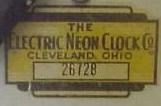
We should probably have an artifacts / antiques / trainspotting type thread.
I had to pour another V60. Baratza recommends a grind setting of 4M (1A being the finest setting, 10W the coarsest, with 2Q zero point calibration). I’m at high 6 / low 7 range, got a 3:38 drawdown, and judging by taste should still go a bit coarser aiming for 3:00 to 3:15. I’m probably going to finish in the 8s which is what people in the HB thread were noticing. Seems counterintuitive that you’d need to grind coarser after achieving alignment?
